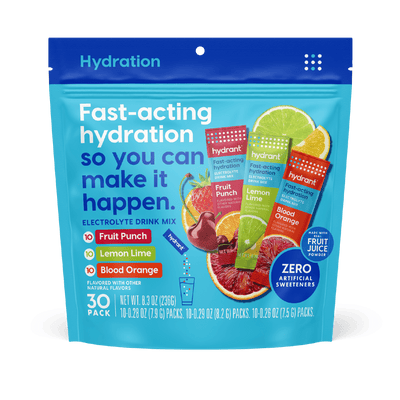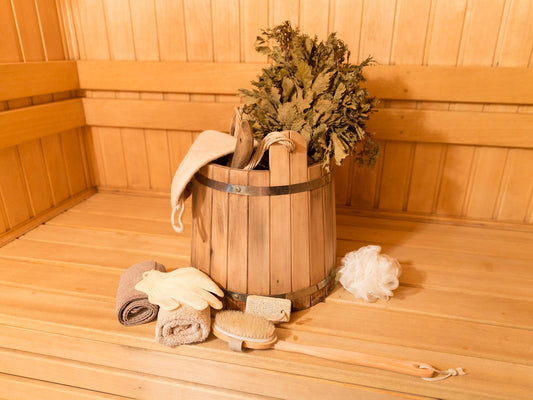We can all agree that muscle cramps, also often referred to as charley horses, are painful and irritating, to say the least. Unfortunately, these annoying and uncomfortable cramps are far too common.
Are you tired of dealing with charley horses? If so, we’re here to help. Everything you need to know about this pesky problem, as well as how to manage it, is explained in this post.
What Is a Charley Horse?
A charley horse is simply another name for a muscle spasm. If a muscle suddenly tightens involuntarily (i.e., without you actively contracting it), that’s a charley horse.
Most often, charley horses occur in the legs, particularly the calves. You may have experienced one in the middle of the night or after a workout. But it’s not just the calves, they can affect any muscle group in the body, too.
Why Is It Called a Charley Horse?
Most people agree that the term “charley horse” originated back in the 1890s. It comes from a horse by the name of Charley, who pulled a roller across the field at the Chicago White Sox ballpark [1].

Charley was old, and as a result of his age, his muscles would stiffen and limit his ability to walk. When players and spectators experienced muscle cramps themselves and difficulty moving, they would think of Charley the horse’s condition. Soon, they started referring to the issue as a charley horse.
What Causes a Charley Horse?
There are quite a few issues that can contribute to charley horses. The following are some of the most common causes:
Low-Carb or Keto Diets
Many people struggle with frequent charley horses when they first make the switch from a traditional, high-carb diet to a low-carb or ketogenic diet.
During this transition phase, the body goes from using glucose (sugar) for energy to ketones. Ketones are produced by the liver after stored glucose (glycogen) has been depleted [2].
Glycogen is stored with water, so its depletion also leads to a reduction in water and an increased risk of dehydration. Dehydration can contribute to muscle cramps, especially during or after exercise.
Electrolyte Imbalances
Dehydration can also lead to electrolyte imbalances, which are another common cause of charley horses.
Electrolytes are minerals that carry an electrical charge. They are present in the blood, urine, and various tissues of the body, and they carry out several important roles, including the following [3]:
- Balancing water levels in the body
- Balancing the body’s pH level
- Moving nutrients into the cells
- Moving waste out of the cells
- Ensuring proper nerve, muscle, heart, and brain function
Some electrolytes that play an important role in minimizing muscle cramps, specifically, include sodium, potassium, and magnesium. If you have insufficient levels of these electrolytes, you will likely notice that you’re more prone to charley horses.
Excessive Caffeine Consumption
Overdoing it on caffeine may contribute to charley horses as well.
There’s no evidence of dehydration with mild-to-moderate caffeine intake [4]. If you consume a lot of it, though, you might notice that you’re cramping up more often than not, especially if you’re also dehydrated or facing other charley horse risk factors.
Caffeine stimulates muscle contraction, so you may be more prone to spasms after consuming it. Caffeine is a diuretic as well, which means that it causes the body to lose water. This, in turn, can exacerbate dehydration, electrolyte imbalances, and the presence of muscle cramps when caffeine is consumed in excess.
Sedentary Lifestyle
Many people experience charley horses after intense exercise. However, those who live a sedentary lifestyle are actually more likely to struggle with this issue than active individuals.

Prolonged sitting on a regular basis can lead to muscle imbalances and chronic tightness in certain areas of the body, including the legs. When you don’t get a sufficient amount of movement throughout the day, your muscles may be more likely to “seize up” and experience cramps.
Risk Factors
Some people may also be more likely than others to deal with charley horses. If you fall into one of these groups, your risk of muscle cramps is greater than average:
- Athletes
- Older adults
- Pregnant women
- Those who are overweight or obese
- Those who have thyroid conditions, liver conditions, or diabetes
All of these factors can contribute to an increased risk of dehydration and electrolyte imbalances, as well as an increased need for medications like those listed above that are associated with muscle cramps.
How to Get Rid of a Charley Horse
Okay, now that you’re better versed in the causes of charley horses and what’s actually happening when you experience that intense pinching in your legs, let’s dive into how to stop a charley horse. Here are some specific tips & recommendations to help you get ahead of these painful cramps:
Drink Enough Water
At this point, you’ve likely noticed a theme when it comes to charley horses: dehydration is often part of, if not at the root of, the problem. If you find yourself struggling with charley horses on a regular basis, whether you’re an athlete, a new keto dieter, or engaging in activities that may increase your likelihood to be dehydrated, drinking enough water is going to work in your favor.
What does “enough” water look like? Everyone’s water intake requirements are a bit different.
In general, according to the U.S. National Academies of Sciences, Engineering, and Medicine, the minimum daily fluid intake requirement is approximately 15.5 cups a day for men and 11.5 cups a day for women [5]. Start by making these limits your baseline, then increase from there as needed. Remember to always listen to your body and your own needs, and when in doubt, check in with your primary care provider.
Increase Electrolytes
In addition to making sure you’re drinking enough water, you also need to make sure you’re getting adequate amounts of electrolytes, especially key players like potassium, magnesium, and sodium.
Potassium
Potassium is an essential contributor to proper muscle function. Without sufficient potassium, your muscles will struggle to relax and be more prone to cramping [6].

You can get potassium from a variety of foods, including leafy green vegetables (such as spinach, swiss chard), brussels sprouts, zucchini, broccoli, and mushrooms. Certain types of fish, like wild salmon and mackerel, contain some potassium, too.
Magnesium
Magnesium is involved in hundreds of bodily processes, including muscle relaxation. Magnesium and calcium work together, with calcium contracting the muscles and magnesium relaxing them. If your diet is higher in calcium than magnesium (which is the case for many Americans), you may be more prone to charley horses.
Magnesium is found in lots of leafy green vegetables, as well as chia seeds and pumpkin seeds. Getting adequate magnesium from food alone, though, can be tricky, especially since modern farming practices have resulted in decreased magnesium in the soil. Because of this, adding in an electrolyte drink mix (like Hydrant, which has 30mg of magnesium per serving) can be a great addition to your daily routine.
Sodium
Finally, we can’t forget about sodium when it comes to electrolyte balance. Sodium is essential for keeping fluid levels balanced, as well as all of the other electrolytes in the body [7].
The easiest way to increase your sodium intake is to add some extra salt to your food. If this isn’t sufficient, though, and you experience other signs of dehydration or electrolyte imbalance (such as headaches, nausea, etc.), many electrolyte drink mixes also contain added sodium to help you fill in the gaps.
Reduce Caffeine Intake
If you are going a little too hard on the caffeine, you might need to think about cutting back (or at least balancing it out with some extra water and electrolytes).
A few cups of coffee per day isn’t a huge deal and probably isn’t the cause of your charley horses. If you have other risk factors that contribute to a risk of dehydration, though, an excessive caffeine intake could be making things worse instead of better. Like some of the other suggestions, remember to check in with yourself and listen to what your body needs [8].
Get Moving
The last tip for those interested in learning how to manage charley horses is to get moving. Remember, a sedentary lifestyle can increase your likelihood of dealing with charley horses, especially if it’s combined with any of the other potential causes or risk factors mentioned above, so it’s important to make regular exercise a priority.
Your workouts don’t have to be super intense to potentially minimize the frequency and intensity of your muscle cramps. Going for a few short walks throughout the day can make a big difference, for example, and stretching is great for stimulating blood flow and loosening up tight muscles.
Takeaways
We get it—charley horses are frustrating and painful. Luckily, though, you don’t have to deal with them forever. Keep these tips in mind so you can kick charley horses to the curb, all while staying hydrated and on top of your wellness routine.




























